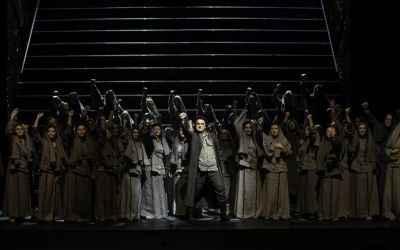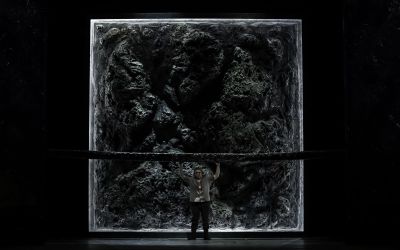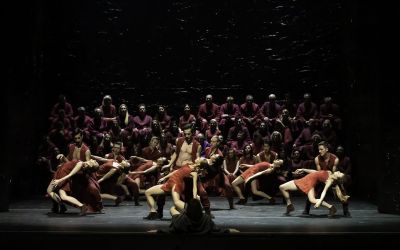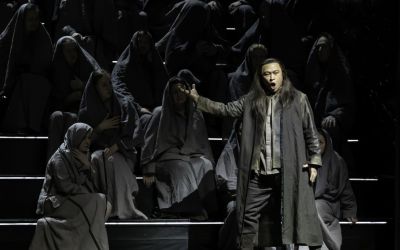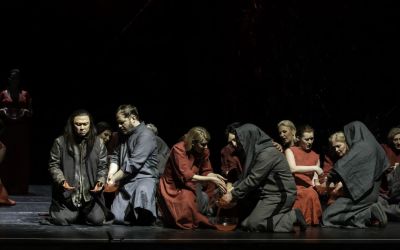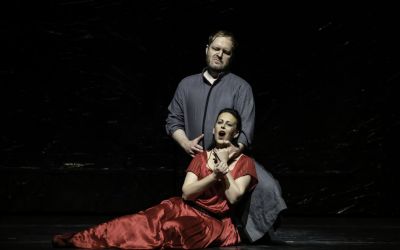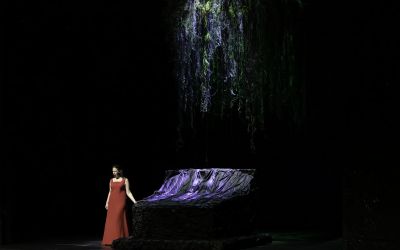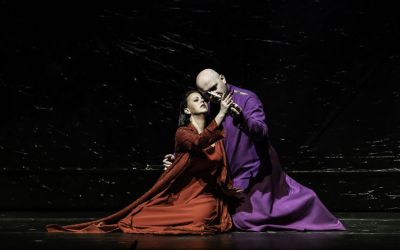opera
Menu left

Dates:
SAMSON AND DELILAH
Opera
Composer:
Camille Saint-Saëns
Author of the libretto:
Ferdinand Lemaire
Date of the premiere:
30.03.2019
Duration:
2 h 45 min (2 intermissions)
Producers:
Musical direction:
Vladimir Kiradjiev
Direction:
Marek Weiss
Choreography:
Izadora Weiss
Set design:
Marcel Sławiński, Katarzyna Sobańska
Costume design:
Izadora Weiss
Lighting direction, Visualizations:
Hektor Werios
Assistant director:
Adam Grabarczyk, Waldemar Stańczuk
Assistant conductor:
Marta Kosielska
Assistant set designers:
Sławomir Szondelmajer
Choir preparation:
Maciej Salski
Poster design:
Mariusz Andryszczyk
Stage manager:
Zbigniew Pawełczyk, Andrzej Kowalik
Opera in three acts. The performance is in French with Polish subtitles.
The grand opera without a happy ending...
An elderly music enthusiast drew my attention to Samson, telling me about Voltaire's libretto; he even sketched out a preliminary scenario for my use. Thus Saint-Saëns wrote in a letter to Henri Collet, revealing at the same time his desire to reference the tradition of oratorio in Samson and Delilah. Hence, the work, not being an "action opera," in its construction contains more purely melodic virtues than dramatic ones, with a predominance of musical mood over lively stage action. Moreover, the libretto of the opera commissioned from Ferdinand Lemaire took into account numerous suggestions from the composer and is based on Chapter XVI of the Book of Judges, drawing only the most essential episodes: Samson's victory, Dalila's betrayal, Samson's revenge, and death. Saint-Saëns composed - with longer and shorter breaks - Samson and Delilah between 1868 and 1875, finally, under the influence and patronage of Franz Liszt, presenting his work to the public on December 2, 1877, at the premiere in the Hoftheater in Weimar.
In the composer's homeland - France - the opera made its stage debut only 13 years later; the grand premiere took place at the Paris Opera in 1892. Despite Saint-Saëns' opera's spectacular nature, the great effectiveness of the main characters' roles, and the extraordinary musical mood, it did not immediately gain full success. However, subsequent productions of the work quickly brought Samson and Delilah the well-deserved recognition of critics and success with an audience interested in biblical themes - captivated by the music, attractive scenery, and vocal prowess of the main characters.
Samson and Delilah is a typical grand historical opera, although, as befits works of this period, it contains a considerable portion of operatic lyricism. Poland first encountered the opera in Italian - in Warsaw in 1903, and in Polish - in Lviv in 1906. After the war, the opera of Saint-Saëns was staged in 1985 by the Baltic Opera - with Stefania Toczyska, and in 1994 by the Wrocław Opera - with Ewa Podleś in the role of Dalila.
Samson and Delilah - the only opera by Camille Saint-Saëns (considered the wonder child of French music) was created in 1877. It made its debut on the stage of Łódź opera on March 30, 2019, for the first time. The production was realized by Marek Weiss - an outstanding director, author of many unconventional opera productions. His performances, also those realized at the Grand Theatre in Łódź (including Penderecki's The Devils of Loudun, Mozart's Don Giovanni, and Verdi's Aida), attracted the attention of theater and opera critics with innovative and timeless interpretations of operatic classics, captivating the audience with the scale of the staging and the director's characteristic care for the "theatricality" of the work and the actor's interpretation of its characters.
The same applies to the Łódź production of Samson and Delilah - a work full of mystery, psychological nuances, and sophisticated intrigues, on the one hand monumental, on the other - intimate due to the fates of the main characters and their very personal relationships. Such is the incredibly suggestive music of Saint-Saëns - striking in form and scope of instrumentation, delicate and subtle in characterizing the figures; always, however, shimmering with shades of emotions and moods.
The Łódź performance maintains the form of a so-called grand opera but has nothing in common with opera in the old style. The creators, with Marek Weiss, made sure that the spectacle of Samson and Delilah was particularly emphasized - especially with decorations and costumes, spectacular group scene arrangements, and sensual choreography of ballet scenes. A huge asset of the performance is the concept of staging appreciated by reviewers and warmly received by the audience, suggesting - despite the clearly marked realities of the opera's libretto - the timelessness of the work with all the conflicts and problems contained within it.
design by fast4net








